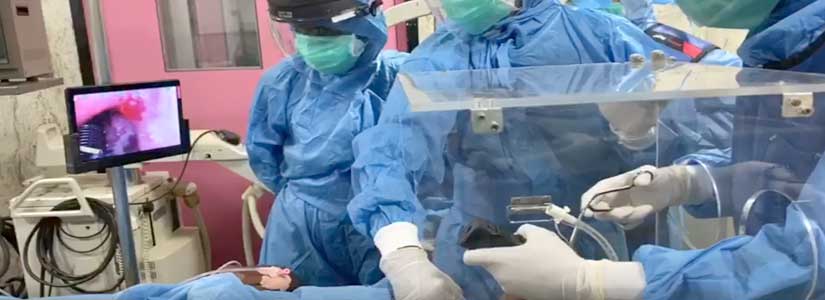
Videolaryngoscopy
Videolaryngoscopes were first proposed to improve airway management through improved glottis visualisation, aiming to reduce incidence of difficult intubation in the operating room. Then, their use was extended to airway management in other settings. These devices contain a miniaturised camera aimed at the tip of the blade to indirectly visualise the glottis.
Videolaryngoscopes differ in design, blade type and technical configuration. Three main categories of videolaryngoscopes exist according to the type of blade. First, the Macintosh blade-shaped optical laryngoscopes have Macintosh blades combined with video technology. The glottis can be seen either directly or via a video screen. Second, the anatomically shaped blades without a tube guide have anatomically shaped, giving a view of the glottis without the need to flex or extend the neck, providing only an indirect view of the glottis, with the need to use a preshaped stylet into the tracheal tube. Third, the anatomically shaped blade with a tube guide do not necessitate a preshaped stylet.
Despite the better visualisation of the glottis, the main challenge when using videolaryngoscopes remains to insert the tube into the trachea. In other terms, achieving a 100% percentage of glottis opening (POGO) view (corresponding to a Cormack-Lehane grade 1 in direct laryngoscopy) during videolaryngoscopy does not guarantee successful intubation, as the tube has to pass a sharp angle to enter the larynx. Table 1 presents ten tips to improve first-attempt intubation success using videolaryngoscopes.